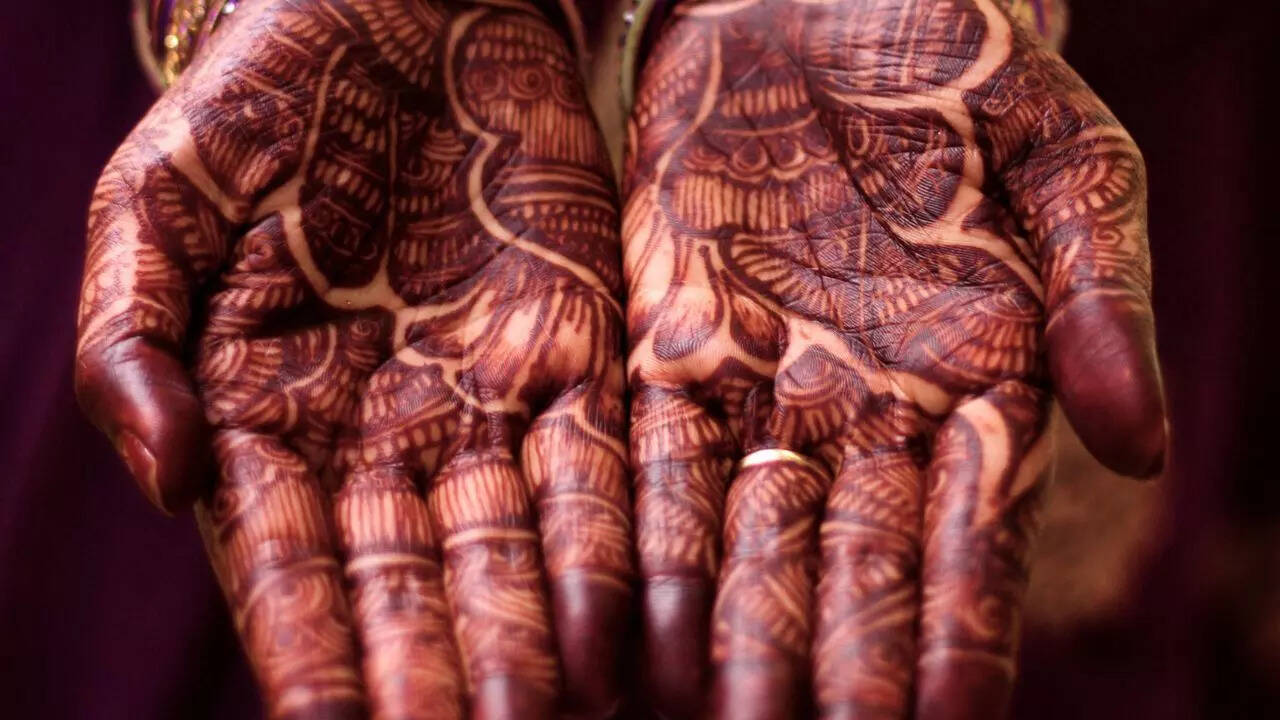Karwa Chauth is a widely celebrated festival when women adorn their hands with elaborate mehendi designs, symbolising love and tradition. While henna adds a festive charm, it is important to understand that not all henna is entirely safe for the skin. Pure henna is generally harmless, but commercially available products often contain chemical additives that can trigger allergic reactions, irritation, or other skin complications. Being aware of these risks, performing patch tests, and choosing high-quality henna can help prevent unwanted side effects. This guide explores the potential skin reactions from henna and offers tips for safe application.
What is henna?
Henna is a natural reddish-brown dye made from the dried and powdered leaves of the henna tree. It is commonly used to create decorative patterns on the skin or to colour hair. Dermatologists often consider pure henna safe for external use, but the quality and composition of henna can vary widely in commercial products. Additives and chemical enhancers, such as p-phenylenediamine (PPD), can significantly increase the risk of skin problems.While pure henna is usually harmless, henna products with chemical additives may cause skin issues. The US Food and Drug Administration (FDA) notes that some individuals experience adverse reactions to henna tattoos, including permanent skin discolouration. The FDA has also reported injuries from regular henna and products marketed as black henna. It is important to use henna cautiously and avoid applying products with unknown or harmful ingredients directly to the skin.
5 side effects of henna you must know before applying mehendi
Allergy attacks
Some individuals develop allergic reactions to henna, especially when it is mixed with chemicals like PPD. Symptoms may include redness, itching, swelling, and mild discomfort. In severe cases, allergic reactions can lead to dermatitis, eye irritation, asthma, or even systemic symptoms such as nausea, tremors, and convulsions. Allergic reactions usually require prompt medical attention, including antihistamines and topical steroids.

Skin inflammation
Henna can cause irritation or burning sensations, particularly in people with sensitive skin or those who leave the paste on for extended periods. In some cases, this may lead to rashes or dryness in the applied area. Studies have shown that black henna, in particular, can trigger allergic contact dermatitis within 1–3 days of application in individuals who are already sensitised. Symptoms may include swelling, blistering, or increased redness, and in severe cases, medical attention may be required to prevent further complications and ensure proper healing of the affected skin.
Sensitivity to sunlight
Henna may increase the skin’s sensitivity to ultraviolet rays, making it more prone to sunburn. Research published in the Indian Dermatology Online Journa, indicates that hair or skin treated with henna can experience additional oxidative damage when exposed to sunlight. Individuals should limit sun exposure or use sunscreen to protect the skin after applying henna.
Infection risk
Applying henna on damaged or broken skin can increase the risk of bacterial infections. Secondary infections may occur if the skin barrier is compromised. It is advisable to ensure that the skin is healthy before application to prevent complications. Maintaining hygiene and using freshly prepared, high-quality henna can further reduce the risk of infection.
Dermatitis
Henna and its additives can trigger dermatitis, leading to red, itchy, and swollen patches on the skin. Patch tests have revealed that even pure red henna can sometimes act as a causative allergen. Individuals prone to skin sensitivity should conduct a patch test before full application to avoid irritation.
Precautions before applying henna
- Perform a patch test on a small area of skin at least 24 hours before full application to check for allergic reactions.
- Use high-quality, organic henna that does not contain chemical additives.
- Avoid applying lotions, oils, or moisturisers on the skin before henna application, as they can reduce stain retention.
- Allow the henna to dry completely before removing it.
- Avoid water contact and friction on the applied area for the first 24 hours to achieve a dark, long-lasting colour.
Treating henna allergies or infections
In case of an allergic reaction, consult a doctor immediately. Treatment often includes oral antihistamines and topical steroid creams. Some home remedies, such as applying aloe vera gel or a baking soda paste, may help soothe mild reactions. Prompt treatment prevents the condition from worsening and promotes faster healing.Choose henna that claims to be 100% natural and is sourced from reliable brands. Avoid products with chemical additives such as PPD. Fresher henna generally provides better colour and streaks. Reading reviews and testimonials can help in selecting a high-quality product and prevent unwanted side effects.By following these precautions and choosing the right henna, you can safely enjoy beautiful mehendi designs for Karwa Chauth without compromising your skin’s health.Also Read: Karwa Chauth 2025: Natural hacks to make mehndi darker and long-lasting at home


